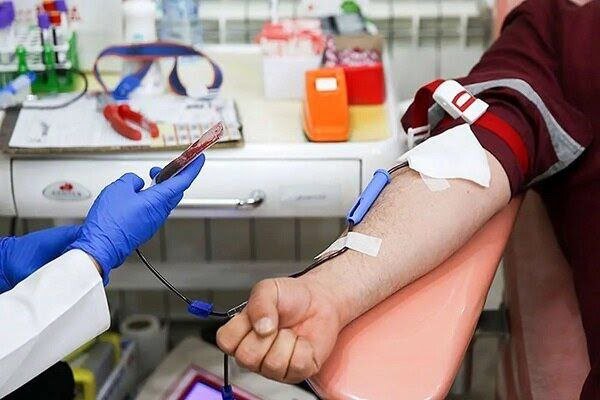Over 27,000 people donated blood on Tasua, Ashura

TEHRAN – A total of 27,200 Iranians donated blood under a national campaign during Tasua and Ashura (the ninth and tenth days of the month of Muharram), according to Bashir Haji-Beigi, spokesman for the Blood Transfusion Organization.
With the beginning of Muharram, the first lunar month, the nationwide blood donation campaign commenced on June 27 and is scheduled to run for 60 days.
The campaign is primarily encouraging youth and women to donate blood, IRNA reported.
With 31 percent growth year on year, Kordestan was the top province, donating 482 units of blood, the health ministry website reported.
Lorestan province, with 29 percent growth, and Qavin province, with 13 percent growth, ranked second and third, donating 667 and 866 units of blood, respectively.
People in Tehran made the largest distribution, donating 3,902 units of blood.
Currently, the average level of blood reserves in the country is sufficient for 10.56 days, and for more than 16 days in Tehran, according to Mostafa Jamali, an official with the Blood Transfusion Organization.
Blood donation in Iran has increased by more than five percent in the first two months of the current Iranian calendar year, which started on March 21, compared to the same period last year.
Also, women’s participation in blood donation has increased by one percent, in comparison to the year before, IRIB reported.
A total of 456,020 blood units were donated over the mentioned period.
The blood donation rate has reached 27.8 per thousand people, which is favorable.
The country’s plasma production has reached roughly 400 liters. However, the country needs approximately one and a half million liters of the product.
WHO lauds IBTO’s achievements
In January, the World Health Organization representative, Jaffar Hussain, admired the Iranian Blood Transfusion Organization’s (IBTO) leadership in blood safety and transfusion services, and highlighted their remarkable achievement of a 100 percent voluntary, non-remunerated blood donation system, a testament to the principles of universal health coverage in action.
He also thanked the blood donors, whose selflessness serves as an inspiration to all.
Admiring the IBTO’s efforts and expertise in providing services to patients with rare blood types, the official underscored Iran’s capacity to serve as a model for other nations in the realm of blood transfusion and rare blood management.
Blood donation rises by 1.5% yr/yr
Some 2.36 million Iranians donated blood over the past Iranian calendar year (March 2024-March 2025), representing a 1.5 percent increase compared to the previous year.
Tehran and Fars, Khorasan Razavi, Isfahan, Mazandaran, and Khuzestan provinces made the largest contributions, IRIB reported.
Over the past (Iranian) year, some four million blood units, including blood products, were transferred to medical centers, IRIB quoted Haji-Beigi, as saying.
Men made up 95 percent of blood donors, while women’s contribution amounted to five percent. Women in Lorestan province, North Khorasan, and Sistan-Baluchestan had the highest share, he added.
Highlighting the need for negative blood types, the official said 90 percent of donors had positive blood.
MT/MG
Leave a Comment